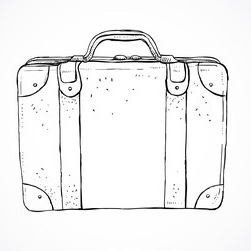 Recently, I was talking with a mom whose son is having some emotional and behavioral issues. She wishes she had a better understanding of why he’s struggling, but her husband is adamant that they not have him tested. Dad doesn’t want his son to have the stigma of a label. Who does? He’s not the first person to feel this way.
Recently, I was talking with a mom whose son is having some emotional and behavioral issues. She wishes she had a better understanding of why he’s struggling, but her husband is adamant that they not have him tested. Dad doesn’t want his son to have the stigma of a label. Who does? He’s not the first person to feel this way.
Sometimes, we’d rather not “know”.
This topic brings mixed emotions for so many parents. Finding out your child has issues – of any type – is tough to hear, even if you already knew it in your heart. Many parents are crushed when they first get the news of their child’s diagnosis. It can provoke all kinds of reactions, including anger, confusion, relief, sadness, guilt, and overwhelm.
A solid evaluation can open your eyes.
But evaluations themselves aren’t the enemy. In fact, getting a thorough evaluation can be incredibly useful. The first time we got one, I was blown away by how much information it provided about how my son’s mind works. (Too bad we can’t all get one!) Identifying a person’s vulnerabilities as well as their strengths can point to new approaches worth exploring. And understanding what causes a child to struggle in the first place can help everyone involved see them with new-found empathy and ideas.
But labels come with their own baggage.
The problem isn’t with the evaluations, it’s in the labels. Part of an evaluation may include a diagnosis, which could be any of 265 psychological “disorders”, as defined by the Diagnostic and Statistical Manual of Mental Disorders, version 5 (the “DSM 5”), the official guide practitioners use.
It’s important to understand what labels really do for us — and what they don’t.
Here are 3 things about diagnostic labels you should know:
- Labels aren’t like a throat culture.
Even though diagnostic labels are based on a pathological model, they don’t actually correspond with known, measurable biological processes. Unlike diabetes, for example, which can be diagnosed by measuring insulin levels, mental disorders – including attentional deficit hyperactivity disorder (ADHD), autism spectrum disorder (ASD) and generalized anxiety disorder (GAD) for example – are determined by what amounts to a checklist of symptoms that tend to go together.
A child may have symptoms from more than one category, but a clinician will determine which category (or categories) fits best. Labels are only an indicator of a type of challenge. You can think of them as an umbrella term for many individual expressions.
- Labels are loaded.
Many labels carry stigma with them and can be harmful if they’re not handled with care. People have their own preconceptions about what kind of person a certain label will be. Labels might offer a shorthand way of characterizing a condition, but they can never stand in as a way to describe an individual. Labels can limit everyone’s expectations, including our kids’ own expectations of themselves.
Dr. Ned Hallowell, who is well known in the realm of learning and attentional issues, eloquently highlights the damaging effects this labeling system can have. (Note: I’ve crossed out his references to specific issues, so you can superimpose your own kind of complicated.) Hallowell says:
“Using our pathology-based model, when we diagnose and treat these kids we often, inadvertently, instill the most dangerous learning disabilities. By far, the most dangerous learning disabilities, what truly holds people back in life, are not ADD or dyslexia. The dangerous disabilities are fear, shame, loss of hope, broken confidence, shattered dreams, and a feeling of being less-than. Those are the disablers. Without meaning to, teachers, parents, doctors, and other professionals instill these disablers every day – in the name of helping children.”
- Labels can be fluid.
A mom recently counted for me all the different diagnoses her son had been given over the years. It took two hands. Sometimes children collect or shed diagnoses as they evolve and grow. Since the system requires an element of professional judgment, practitioners can have differing opinions, too.
For parents like us, it can be disorienting when we spend all kinds of time going down the rabbit hole of learning how to manage one thing, only to discover we need to learn about something else. If your child’s challenges are complicated, let everything you discover about what helps be your guide, rather than letting a certain label take the lead.
A necessary evil…
Until there are new breakthroughs in science, unfortunately we’re stuck with this system. The fact is, we need labels for insurance purposes, and also to qualify for certain special education services. Labels can give us a sketch of what to expect and an idea about how to help, but they’re not a sentence. We don’t have to let labels define our kids. — If we did, I’d choose “One of a Kind“.
I’d love to hear from other parents: How do you feel about labels?

Love that “one of a kind” 💗!
Coco Davis • Managing Broker
Windermere Real Estate
425-214-2682
Sent from my phone; kindly excuse typos and brevity!
LikeLike